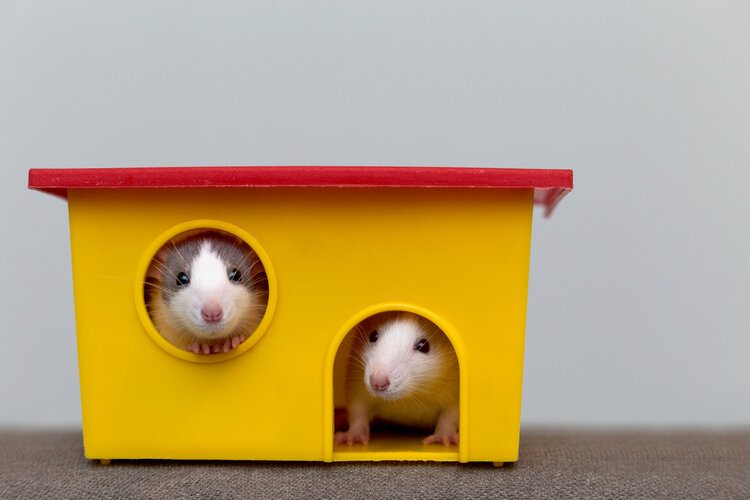
Losing any pet is a totally nerve-wracking experience, but especially with small and fragile pets like hamsters. There’s always a worry in the back of your mind that, with how tiny they are, you might never find them again—or worse, accidentally step on them.
If you’ve recently lost your hammy, time is of the essence. Start your search right away using the tips below on how to find a lost hamster, and we hope that you’ll be able to locate your lost pet in no time.
The 12 Tips for Finding a Lost Hamster
1. Start With Their Cage
It may sound silly, but many hamsters are so adept at hiding themselves that you should thoroughly search their cage before doing anything else. If nothing else, this may give you clues as to where they went next, such as trails of bedding leading out of their cage.
2. Check Behind and Underneath Furniture
Hamsters love to hide, so you’ll need to carefully check behind and underneath any furniture near where your hamster escaped. Grab a flashlight so you can check more thoroughly underneath darkened furniture.

3. Look Inside Cabinets and Drawers
Even the tiniest of holes can give a hamster plenty of room to squeeze through—and some hamsters can’t quite figure out how to get back out, either. Open all your drawers and cabinets to check for your hammy.
4. Check on Bookcases and Shelves
Surprisingly adept little climbers, hamsters can sometimes scale great heights due to their curious and adventurous temperaments. Give a thorough search through any bookcases, moving books out of the way to check behind them as well.

5. Search Through Backpacks and Purses
Digging and burrowing are some of a hamster’s favorite activities, so it should be no surprise that they’d love to find their way into your bags, backpacks, and purses. This is especially common if you keep any snack bars, mixed nuts, or other treats in your bags.
6. Check Behind Appliances
Washers, dryers, and hot water heaters are surprisingly common places that hamsters gravitate towards. Be extra careful if you have to move these, so as not to put your hamster in danger of being squashed.

7. Double Check Any Closets
Dark and often filled with plenty of soft clothing and boxes to burrow into, hamsters are especially fond of closets. Again, exercise extreme caution as you move any boxes, and equip yourself with a flashlight to increase your hamster tracking abilities.
8. Try Looking at Night
As nocturnal creatures, hamsters are much more active at night than during the day. Organize a stakeout with flashlights and enticing treats, and you’ll be much more likely to catch them out and about.

9. Lure Them Out With Treats
Hamsters are especially fond of seeds, which means that you can place small piles of them in each room of your home to determine which part of your house your hamster is hiding in. Place a matching number of seeds in each room, then check for any that have been pilfered.
10. Track Their Movements with Flour
A small dusting of flour or cornmeal across doorways can be an easy way to track your hamster’s movements. Once you see the direction that their footprints are headed, you’ll have a better idea of where to track them down.

11. Place Aluminum Foil and Listen Carefully
A thin sheet of aluminum foil combined with a dead-quiet household can be a quick and easy way to determine where your hamster is hiding. As they run across the foil, you’ll be alerted to their position and be able to home in on their hiding spot.
12. Leave Their Cage Open and Hope They Return
Oddly enough, many hamsters enjoy breaking out just for the sake of exploring – then return to their comfy homes when their curiosity is satisfied. Always leave your hamster’s cage door open for them, with plenty of food to entice them back into their home.

Final Thoughts on Finding a Lost Hamster
Though losing a hamster can be an incredibly stressful experience, all hope is not lost. Follow the suggestions listed above diligently, and you’ll have a great chance of locating your lost friend within a day or so. Thankfully, most hamsters will carry a significant food supply with them in their expandable cheeks, so you’ll have plenty of time to track them down.
- See also: How to Find a Lost Dog: Our Tips
Featured image credit: Free-Photos, Pixabay








